Here we are, a year after planting those four acres of native grass. The same pattern I saw when planting the first acre is showing up in these four. Sure, alot of weeds came up, and especially yellow foxtail, which, I think, is a pleasant annual grass. It was hard to even see much evidence of our planting last year. A few clumps of sideoats gramma came up here and there. I had a few days that I wondered if it would take.
Across the seed cloud
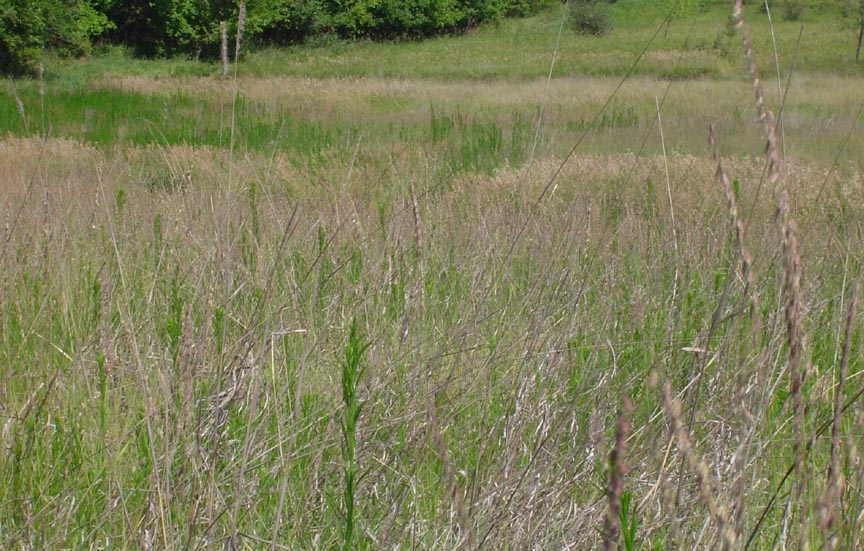
This year is a completely different story. The lines of green, back and forth, across the berm are the native grass coming in. Even though I mowed alot of it, one acre entirely, early in the season, when it came time to go to seed, even plants that had been mowed a few weeks before, had seed stalks two feet high.
There is now a cloud of seeds above the ground, in the middle of July of the second season. The first acre that was planted a couple years before required no mowing and no weeding this year. The other 4 or 5 acres, planted last spring, are going to seed like crazy. A storm of seeds will fill in areas that do not have the native grass.
One thing I wish I had not done is mow the blue gramma. For some reason, mowing that once, early on, prevented it from going to seed. It is only about half an acre, and there is a pretty good stand of blue gramma there, so next year I am going to let it grow up and go to seed without mowing -- except for the weedy patches.
Blanket Flowers
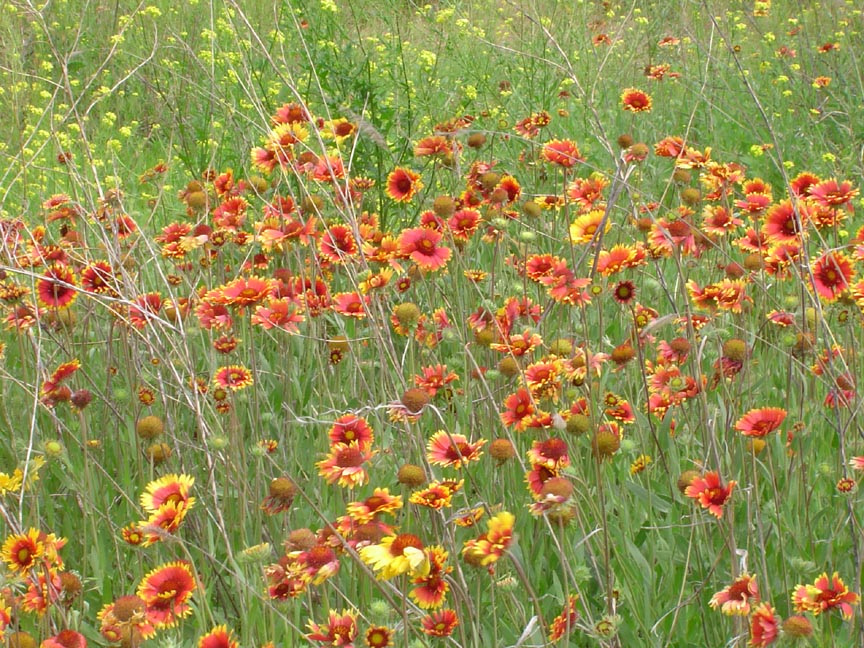
Stone flower
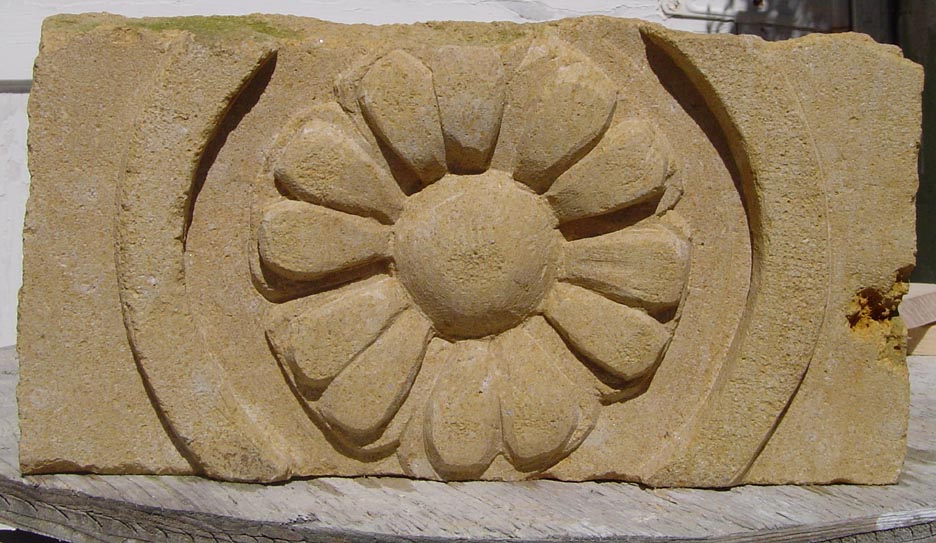
The blanketflowers are really a pleasant surprize. Wow. They did come up the first year, but the second year, Oh my gosh, there are thousands of them. They have replanted in another area and there is a blanket of blanketflowers.
I was inspired by these blooms, so last fall, I made a stone design from it, which will serve as an ornament in our building. The buttonweed is also a great emblem of the field, and I plan to use that image as well. The buttonweeds spent seedpod is quite a geometric figure. At first I thought it might be easy to approximate, but I am going to have to try again -- after failing miserably.
I planted ten austrian pines. The pattern of bowling pins worked great to fill a triangular space. Until they get large, the blue gramma will be a pleasant bed of grass on the relatively level corner. The blue gramma is a short grass, I found out, quite by accident and luck. We had used it to establish something/anything after having some earth moved to create a flat area. The blue gramma only grows to about 8 inches when completely left to its own devices. It makes a thick fine grass. I also found out it can burn pretty well in dry weather, but that is another story.
Last year I wondered what might be different around the field and the forest at the bottom of the hill after a year with no chemicals from farming the field. This year I am happy to say that I found an abundance of berries in the forest. More raspberries, grapes, mulberries, than I have ever seen there before. The wildlife in our field is abundant as well. Even though it is a mature weed patch in about three acres, the birds and deer and wild turkey and insects could not be happier.
This year we have been out to the land many times. The familiarity with the hills and getting a mower has allowed me to really get a feel for where I want to live and what I want to build. It has been a struggle to decide. Although I used to love to look at house plan books when I was a kid, I can't seem to let a stranger determine the placement of rooms in a house I build.
And, of course, along with trips to the land, comes trips to the Rustic Inn in Ft. Calhoun! Very rustic, indeed, but look for a great burger there. And things are getting fancy in one downtown building that I always though would be great for a business like wine tasting. 'Too Far North' looks like a possible place for the Burt St. Boys to have a jam.
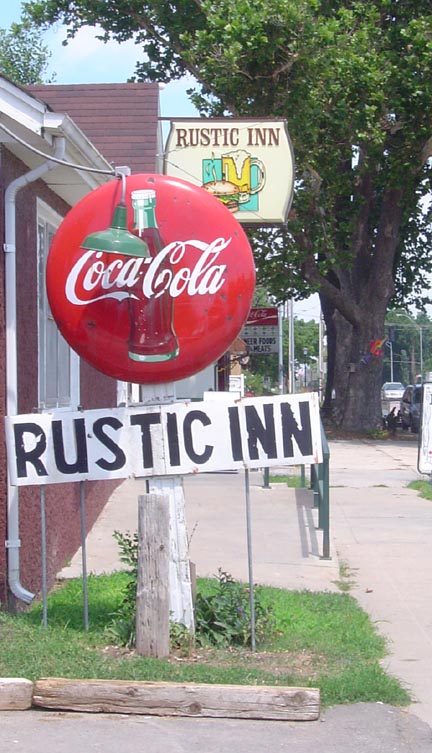
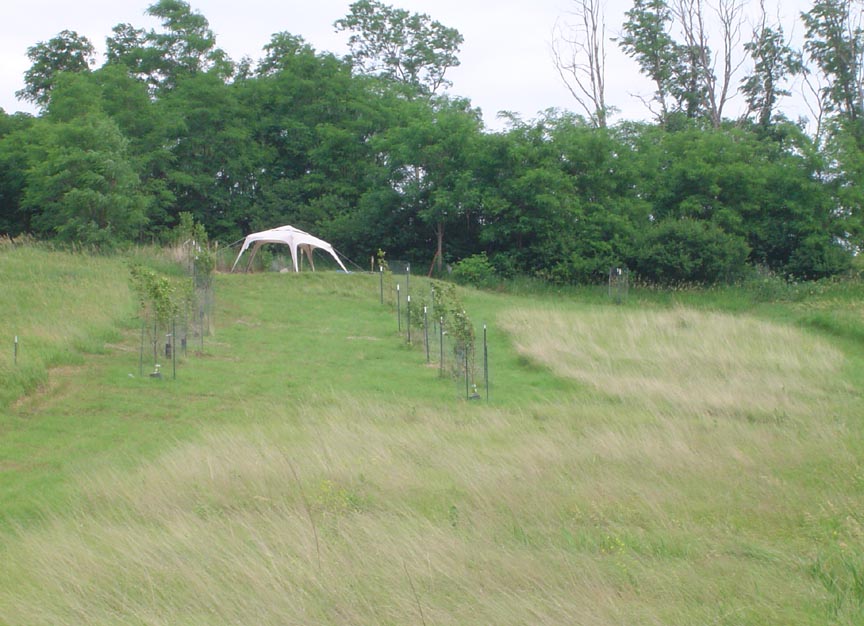
The first patch, all grown up
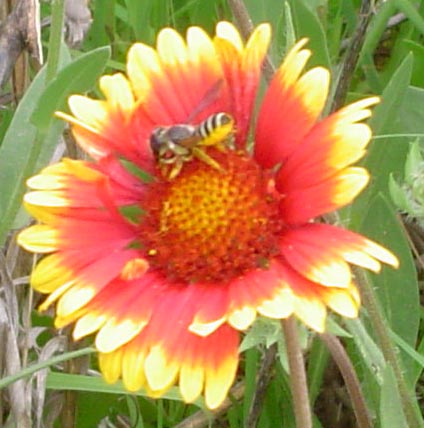
Even the weeds become old friends when you see how tall they have become, how much wildlife they foster. The dreaded purple thistle, like a wanted criminal, can bring action from government bodies if you let it get too thick. Even the purple thistle starts to look like a pretty flower in the context of prairie weeds.
The earth is like a body. The topsoil is like skin. When you scrape it, the earth really wants to make a scab to start the healing. The weeds are like the first line of defense against erosion. Grass takes over whether you plant it or not. Small trees get a foothold and secure the site for slower growing larger trees.
In that context, turning these acres into native grass is just one step along the way to a forest, I guess. We will enjoy the soft lush carpet of acres of thick tufts of grass for years, though. To control seven acres of 'lawn grass' is possible with a little riding mower, but for native grass, that loves it HOT, and scoffs at drought, holds the hill, and crowds out weeds MOWING IS OPTIONAL.
